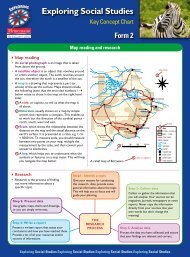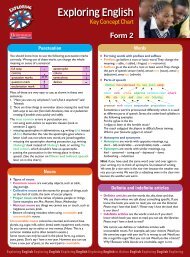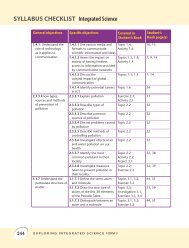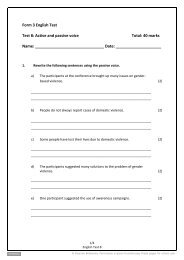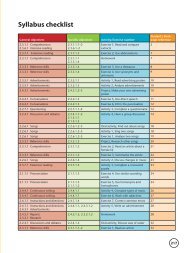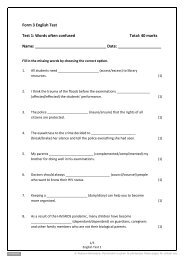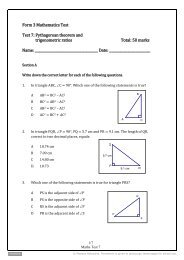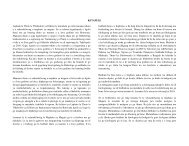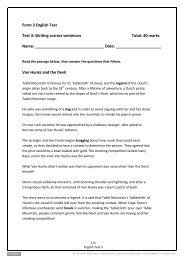Teacher's Guide - Pearson
Teacher's Guide - Pearson
Teacher's Guide - Pearson
- No tags were found...
You also want an ePaper? Increase the reach of your titles
YUMPU automatically turns print PDFs into web optimized ePapers that Google loves.
multiply by 1.3 and then by 0.7, but 1.3 3 0.7 1. Rather, 1.3 3 0.7 5 0.91. Thisindicates a loss of 1 2 0.91 5 0.09, which is equivalent to 9%.e) % loss 5 ________ P3 171.60P35 240 3 ____ 1001 5 9%Note: This is the same result as that found in question d).3. a) No, because a 20% reduction would result in a price of:P120 000 3 0.8 5 P96 000.P100 000b) Purchase price 5 ________ 1.185 P84 745.76Note: It is essential that students understand the difference in calculation betweenmarked-up pricefinding the original price from a mark-up (Original price 5( ___________________(1 1 ________________percentage mark-up) ) 100and reducing the price of an article by a certain percentage(reduced price 5 price 3 ( 1 2 _________________percentage discount100 )).4. You can buy from either shop, because both values work out P1 008.Exercise 4.4 (Student’s Book page 65)1. a) A 5 P180 000(1 2 5 3 0.13)5 P63 000b) A 5 P180 000(1 2 0.13) 55 P89 715.772. a) The computers depreciate at P10 000 per annum until their value is P0.P50 000b) _______P10 000 5 5 yearsNote: Point out that when an article depreciates according to the straight-linemethod, its value eventually becomes zero. In contrast, when an article depreciatesaccording to the reducing-balance method, its value can never become zero. You canintroduce the asymptotic effect here.3. a) P800 5 P(1 2 5 3 0.15)∴ P 5 P3 200b) P800 5 P(1 2 0.15) 2∴ P P1 8034. a) P800 5 P4 500(1 2 6 3 i)∴ i 0.1962 19.6%b) P800 5 P4 500(1 2 i) 6∴ i 5 1 2 6 √ ____________ P800P4 500 25%Chapter 4: Money23





